Key Takeaways
- Senior stakeholders often resist being influenced, so you must shift from “pitching” to aligning with their world.
- Effective influence depends on understanding their context, language, measures of success and pain-points.
- Use a four-component framework: motivation + message + method + momentum.
- A five-step practical process helps you apply influence systematically and sustainably.
- Common pitfalls (e.g., over-relying on data, ignoring emotions, failing follow-through) derail influence—each has a solution.
- A real-world executive example demonstrates a measurable gain (e.g., 20% faster decision-making) when you apply the approach.
In today’s technology-driven organisations, even the most seasoned executives can find themselves locked into status quo thinking, risk-averse stances, or simply overwhelmed by competing priorities. For you as a leader trying to drive transformation, the challenge is clear: how do you influence senior leadership when they don’t want to be influenced? And why does it matter now?
Why it matters
As organisations face digital disruption, agile demands, and rapidly changing business models, the pressure on senior leadership to respond is relentless. According to a recent report by the Association for Project Management, senior stakeholder groups such as CEOs and CFOs are increasingly under pressure, and the ability of project- and change-leaders to influence them is becoming a differentiator for success.
When you fail to influence senior leaders, projects stall, budgets slip, morale falls, and innovation stalls. If you can instead build credible influence—even when the stakeholder says “we’ll stay with what we have”—you open the door to real change.
A framework for influence
To systematically influence senior leadership who may resist, adopt this four-component framework: Motivation – Message – Method – Momentum.
Below is a detailed comparison table:
| Key Component | Action | Example | Risk if Ignored |
| Motivation | Identify what the senior leader truly cares about—goals, pressures, metrics. | You discover that the CFO is fixated on cost control while still being asked to invest in AI. | You craft messages that don’t land, you lose credibility. |
| Message | Translate your idea into language aligned with their motivation, using their metrics. | Instead of talking about “technical architecture”, you frame “reduce risk and free 10 % of capital over 18 months.” | The stakeholder believes you don’t understand them and ignores you. |
| Method | Choose how and when to engage—channel, timing, format, existing relationships. | You deliver a 15-minute briefing ahead of the board-prep meeting vs a 60-slide deck at the last minute. | You catch them at a bad time, and they shut you out. |
| Momentum | Build follow-through: quick wins, visible progress, regular updates. | After approval, you deliver a pilot in 6 weeks, share results, and then ask for the next step. | They forget the commitment, revert to the status quo, and your influence evaporates. |
5-Step Practical Application
Here is a five-step process you can work through with your leadership team or yourself:
- Map the stakeholders – identify senior leaders you need to influence, their direct reports, and pressures they face. Use a power/interest grid if required.
- Probe their context – meet or informally connect to ask open questions: “What keeps you up at night?” “What do you need to solve this quarter?”
- Reframe your proposition – craft your idea in their language: embed benefits tied to their metrics or issues they care about.
- Secure the touch-point – choose the right moments and channels to deliver your message (e.g., pre-meeting brief, 1:1 coffee, informal update) and prepare to listen more than speak.
- Anchor with momentum – define initial steps, quick wins, metrics to track, and commit to short-term progress. Then report back in their preferred rhythm.
Real-World Executive Example
Consider a global tech-firm CIO who wanted to implement a cross-divisional identity access platform but faced resistance from the COO, who believed existing systems were “good enough”. The CIO used the above framework:
- Motivated by the COO’s pressure for “zero breaches and audit-ready by Q3”.
- Message framed as: “We’ll reduce identity-related risk by 30 % and cut audit prep time by 25 % within 12 months.”
- Method: A 10-minute executive brief ahead of the strategic planning off-site, not a full project plan.
- Momentum: Delivered a pilot in 8 weeks, showed the dashboard, then asked for the full budget.
Outcome: The COO approved the budget within 3 months, and audit-prep time dropped 27 % in the following year—allowing the team to free up 400 hours of resource time (≈20 % productivity gain).
This shows how aligning motivation + message + method + momentum can turn reluctant senior leadership into advocates.
Pitfalls & Solutions
| Pitfall | Fix |
| Over-relying on data and specs, neglecting emotional or political context. | Start by listening to their concerns, and anchor your facts in their world. |
| Ignoring existing relationships or channels (thinking “if I present well they’ll buy”). | Map stakeholders first, identify informal networks, and use them. |
| Presenting your full solution too soon, creating resistance or feeling of loss of control. | Introduce incrementally, invite their input early, and co-create the plan. |
| Failing to follow through after initial approval (no visible progress). | Set a short-term deliverable, share status with the leader, and keep momentum. |
| Speaking in technical or jargon-heavy language alienates senior non-technical leadership. | Translate into business terms, metrics, risks, and benefits. |
Why this works
The combination of taking the senior leader’s frame of reference, respecting their priorities and communication style, and providing momentum builds executive presence through aligned influence rather than manipulation. Research in stakeholder management confirms that influence, intelligence, and communication are the three core capabilities required to manage senior stakeholder relationships.
Final reflection
Many agendas bombard today’s senior leaders—they’re not always resistant to change, but they are selective about what they give attention to. If you show up with their world-view, speak their language, and deliver early results—your proposal moves from “nice to have” to “must have”.
Ask yourself: “Which senior leader am I trying to influence? What is the one metric they measure? How will I show progress within the next 90 days?”
That question alone will focus your influence strategy and help you gain traction.



